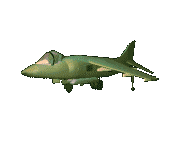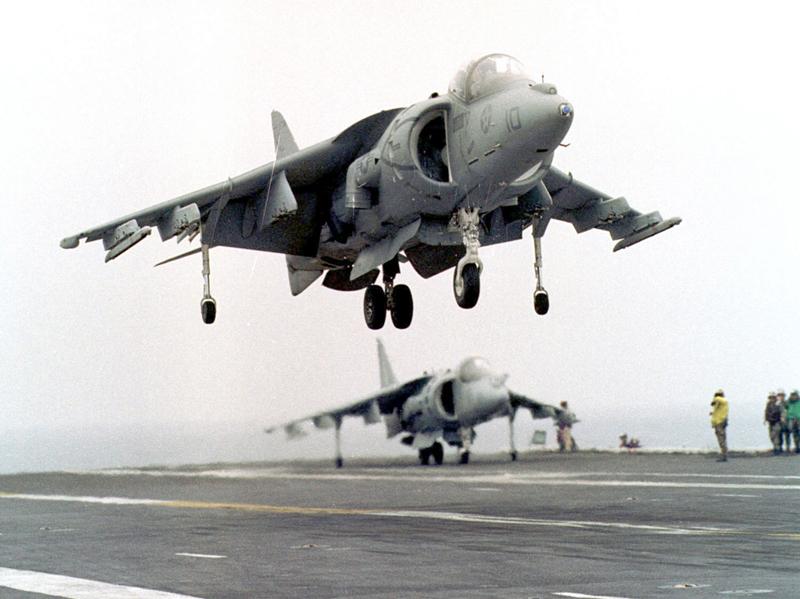|


Carrier take-off
Photo from: "U. S. Navy Photo"
AV-8B Harrier II V-STOL
Aircraft
In 1998, the McDonnell Douglas AV-8B Harrier II was the only fixed-wing vertical or short takeoff
or landing (V-STOL) aircraft in the free world. Its ability to take off vertically makes it one of the most maneuverable combat
aircraft in service, and it can zoom out of the range of enemy fire extremely quickly.
Based on the 1957 British-designed Hawker-Siddley "Kestrel," the AV-8B Harrier II was developed
by a team representing McDonnell Douglas, British Aerospace and Rolls-Royce. Production of the St. Louis-built AV-8B began
in 1981, and more than 340 Harrier IIs were produced. They carried more fuel than the AV-8As and had higher lift and better
cruise characteristics. In 1991, Harrier IIs were the first U.S. Marine Corps tactical aircraft to arrive for Operation Desert
Storm over the Persian Gulf. During the 42 days of combat, 86 Harrier IIs flew 3,380 combat sorties (4,112 combat hours) and
delivered more than 6 million pounds of ordnance.
The United States, Spain and Italy coordinated efforts to develop the AV-8B Harrier II
Plus, which first flew Sept. 22, 1992. Prime contractors are McDonnell Douglas Aerospace and British Aerospace. The AV-8B
Harrier II Plus, with a more powerful engine and advanced radar and avionics, can operate efficiently in darkness and in adverse
weather conditions. Currently, the U.S. Marine Corps is converting all its day-attack Harrier IIs into Harrier II Plus aircraft.
Specifications
| First flight: |
Nov. 9, 1978 |
| Wingspan: |
30 feet 4 inches |
| Length: |
46 feet 4 inches |
| Height: |
11 feet 8 inches |
| Weight: |
31,000 pounds |
| Speed: |
647 mph |
| Ceiling: |
38,000 ft. |
| Range: |
2,416 miles |
| Power plant: |
One Rolls Royce 23,400-pound-thrust F402-RR-408 turbofan engine |
| Accommodation: |
One crew |
| Armament: |
Two 25 mm cannons, plus 9,200 pounds of bombs,
rockets, missiles or extra fuel tanks. |
|